The History
of
Fingerprints
of
Fingerprints

Updated 18 May 2024
Why Fingerprint Identification?
Fingerprints provide a reliable means of personal identification.
That is why fingerprints have replaced other methods of identifying people who are reluctant to admit previous arrests using different names.
Although no human process is flawless, expert fingerprint examination and identification (including palmprint, toe, and footprint) is very reliable when fingerprint activities implement quality assurance standards, guidelines, and best practices such as those listed at the National Institute of Standards and Technology (NIST), Office of Scientific Area Committees for Forensic Science (OSAC).
The science of fingerprint identification stands out among all other forensic sciences for many reasons, including the following:
● Fingerprints have served governments worldwide for over a century by providing accurate identification of persons. No two fingerprints have ever been found alike in the many billions of human and automated computer comparisons. Fingerprints are the cornerstone of criminal history confirmation at police agencies worldwide.
● Fingerprints were the major factor in establishing the first forensic science professional organization, the International Association for Identification (IAI), in 1915.
● Fingerprints established the first professional certification program for forensic scientists, the IAI's Certified Latent Print Examiner (CLPE) program in 1977. The fingerprint discipline has never claimed forensic fingerprint experts (latent print examiners) are infallible. For over four decades, the IAI's certification program has been issuing certification to those meeting stringent criteria and revoking certification for errors (quality assurance problems) such as erroneous identifications.
● Fingerprints continue to expand as the primary method for accurately identifying persons in government record systems, with many thousands of persons added daily to fingerprint repositories worldwide.
● For more than a century, fingerprints have remained the most widely used forensic evidence worldwide. In most jurisdictions, fingerprints harvested from crime "scenes lead to more suspects and generate more evidence in court than all other forensic laboratory techniques combined."
● Fingerprints are a relatively inexpensive forensic discipline for solving crime. Cost is an important factor because governments must balance forensic and investigative resources to best satisfy timeliness and thoroughness goals, without sacrificing accuracy. For example, DNA is as common as fingerprints at many crime scenes, but can cost up to 100 times more than fingerprint analysis for each specimen, and often requires additional months before analysis is complete. Thus, while both fingerprints and DNA are typically harvested from serious crimes such as sexual assault and murder, at less serious crime scenes such as burglaries or vehicle break-ins, fingerprints are often the primary evidence collected and rapidly processed.
● Fingerprints solve more crime than DNA... not because fingerprints are more accurate evidence than DNA, but because of the sheer volume of fingerprint records stored in government databases. More fingerprint records are added to US Government (FBI and DHS) databases each year than have been added to the FBI's Combined DNA Index System (CODIS) database in the past 20 years.
● Fingerprints were the major factor in establishing the first forensic science professional organization, the International Association for Identification (IAI), in 1915.
● Fingerprints established the first professional certification program for forensic scientists, the IAI's Certified Latent Print Examiner (CLPE) program in 1977. The fingerprint discipline has never claimed forensic fingerprint experts (latent print examiners) are infallible. For over four decades, the IAI's certification program has been issuing certification to those meeting stringent criteria and revoking certification for errors (quality assurance problems) such as erroneous identifications.
● Fingerprints continue to expand as the primary method for accurately identifying persons in government record systems, with many thousands of persons added daily to fingerprint repositories worldwide.
● For more than a century, fingerprints have remained the most widely used forensic evidence worldwide. In most jurisdictions, fingerprints harvested from crime "scenes lead to more suspects and generate more evidence in court than all other forensic laboratory techniques combined."
● Fingerprints are a relatively inexpensive forensic discipline for solving crime. Cost is an important factor because governments must balance forensic and investigative resources to best satisfy timeliness and thoroughness goals, without sacrificing accuracy. For example, DNA is as common as fingerprints at many crime scenes, but can cost up to 100 times more than fingerprint analysis for each specimen, and often requires additional months before analysis is complete. Thus, while both fingerprints and DNA are typically harvested from serious crimes such as sexual assault and murder, at less serious crime scenes such as burglaries or vehicle break-ins, fingerprints are often the primary evidence collected and rapidly processed.
● Fingerprints solve more crime than DNA... not because fingerprints are more accurate evidence than DNA, but because of the sheer volume of fingerprint records stored in government databases. More fingerprint records are added to US Government (FBI and DHS) databases each year than have been added to the FBI's Combined DNA Index System (CODIS) database in the past 20 years.
Other visible human characteristics, such as facial features, change considerably with age but fingerprints are relatively persistent. Barring injuries or surgery causing deep scarring, or diseases such as leprosy damaging the formative layers of friction ridge skin, finger and palm print features have never been shown to move about or change their unit relationship throughout the life of a person (and injuries, scarring, and diseases tend to exhibit telltale indicators of unnatural change).
In earlier civilizations, branding or maiming (cutting off hands or noses) were used to mark persons as criminals. The thief was sometimes deprived of the hand which committed the larceny. Ancient Romans tattooed mercenary soldiers to help prevent desertion.
Before the mid-1800s, law enforcement officers with extraordinary visual memories, so-called "camera eyes," identified previously arrested offenders by sight (memory) alone. Photography lessened the burden on memory, but it was not the answer to the criminal identification problem because personal appearances change.
Around 1880, Alphonse Bertillon, a French anthropologist, developed a system of physical measurements to help identify individuals. The system, called anthropometry, involved collecting measurements from the head, foot, middle finger, and other bony parts of the body. The measurements were then reduced to a formula which, in theory, would be unique to each individual and would not change over time. Bertillon also introduced the practice of taking mugshots, or arrest photographs, along with the physical measurements and fingerprints.
The Bertillon System was generally accepted in many countries during the next three decades, however the anthropometric measurement system never recovered from the events of 1903, when a man named Will West was sentenced to the US Penitentiary at Leavenworth, Kansas. It was discovered there was already a prisoner at the penitentiary, whose Bertillon measurements were nearly the same, and his name was William West.
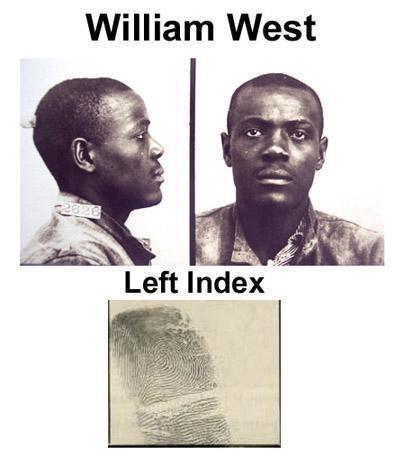

Upon investigation, it was determined there were two men who looked very similar. Their names were William and Will West. Their Bertillon measurements were similar enough to identify them as the same person. However, fingerprint comparisons quickly and correctly determined the biometrics (fingerprints and face) were from two different people. (According to prison records made public years later, William and Will West were identical twins and both had a record of correspondence with the same immediate family relatives.)
Prehistoric
Ancient artifacts with carvings similar to friction ridge skin have been discovered in many places throughout the world. Prehistoric picture writing of a hand with ridge patterns was discovered on a cliff in Nova Scotia. In ancient Babylon, fingerprints were used on clay tablets for business transactions.
BC 200s - China
Chinese records from the Qin Dynasty (221-206 BC) include details about using handprints as evidence during burglary investigations.
Clay seals bearing friction ridge impressions were used during both the Qin and Han Dynasties (221 BC - 220 AD).
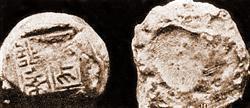
AD 1400s - Persia
The 14th century Persian book "Jaamehol-Tawarikh" (Universal History), attributed to Khajeh Rashiduddin Fazlollah Hamadani (1247-1318), includes comments about the practice of identifying persons from their fingerprints.
1600s
1684 - Grew
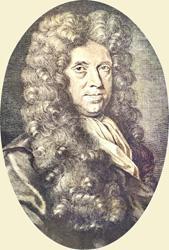
In the "Philosophical Transactions of the Royal Society of London" paper in 1684, Dr. Nehemiah Grew was the first European to publish friction ridge skin observations.
1685 - Bidloo
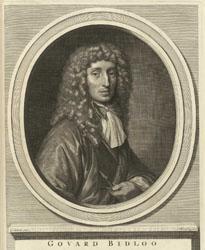
Dutch anatomist Govard Bidloo's 1685 book, "Anatomy of the Human Body" included descriptions of friction ridge skin (papillary ridge) details.
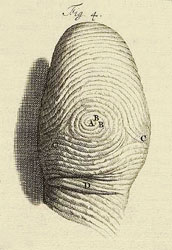
Table 4 from "Anatomy of the Human Body."
1686 - Malpighi
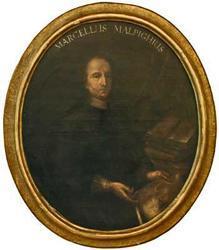
In 1686 Marcello Malpighi, an anatomy professor at the University of Bologna in Italy, included fingerprint ridges, spirals, and loops in his treatise. A layer of skin was named after him, the "Malpighi" layer, which is approximately 1.8 mm thick.
No mention of friction ridge skin uniqueness or permanence was made by Grew, Bidloo or Malpighi.
1700s
1788 - Mayer - First Mention of Uniqueness
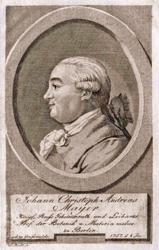
German anatomist Johann Christoph Andreas Mayer authored the book "Anatomical Copper-plates with Appropriate Explanations" containing drawings of friction ridge skin patterns (the original title in German was "Anatomische Kupfertafeln nebst dazu gehörigen Erklärungen"). Mayer wrote, "Although the arrangement of skin ridges is never duplicated in two persons, nevertheless the similarities are closer among some individuals. In others the differences are marked, yet in spite of their peculiarities of arrangement all have a certain likeness" (Cummins and Midlo, 1943, pages 12-13). Mayer was the first person to declare friction ridge skin is unique.
1800s
1823 - Purkinje
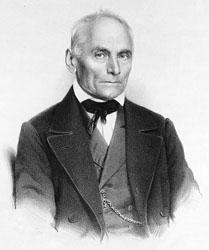
In 1823, Jan Evangelista Purkinje, anatomy professor at the University of Breslau in Wrocław, Poland, published his thesis discussing nine fingerprint patterns. Purkinje made no mention of the value of fingerprints for personal identification. Purkinje is referred to in most English language publications as John Evangelist Purkinje.
1856 - Welcker
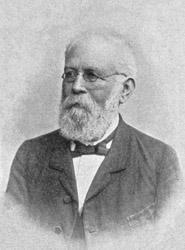
German anthropologist Hermann Welcker of the University of Halle, studied friction ridge skin permanence by printing his own right hand in 1856 and again in 1897, then published a study in 1898.
1858 - Herschel
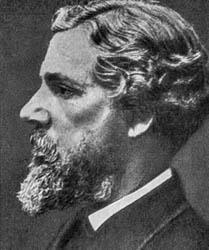
The English began using fingerprints in July 1858 when Sir William James Herschel, Chief Magistrate of the Hooghly District in Jungipoor, India, first used fingerprints on native contracts. On a whim, and without thought toward personal identification, Herschel had Rajyadhar Konai, a local businessman, impress his hand print on a contract. Jungipoor is now know as Jangipur in the state of West Bengal.
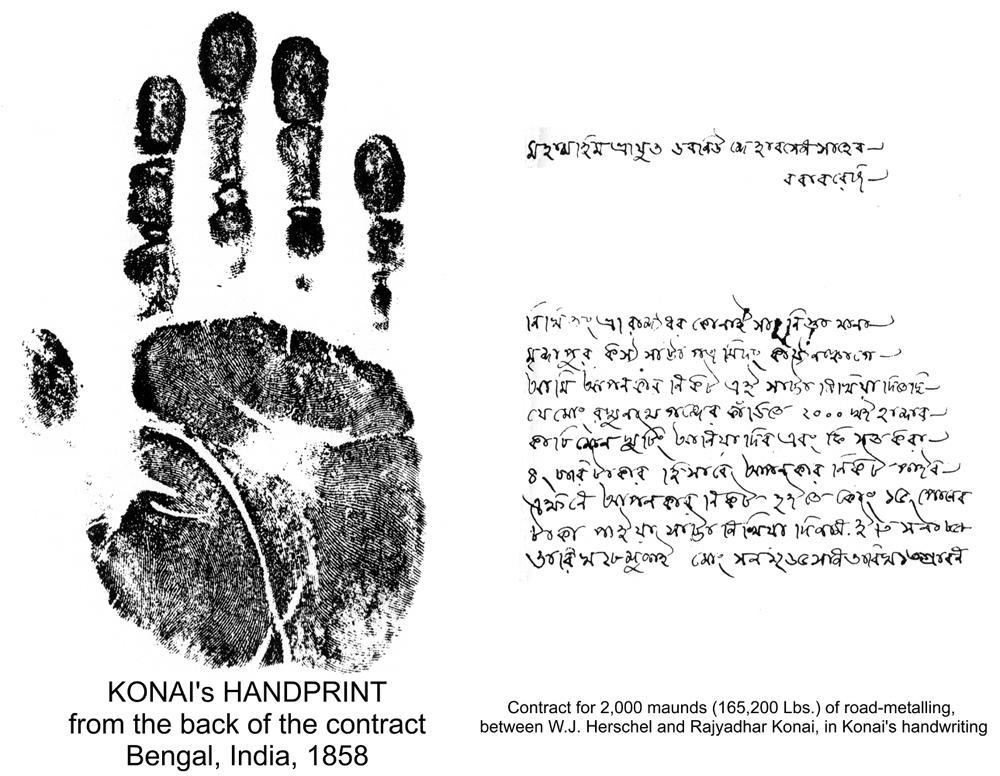
The purpose of the hand print was to "... to frighten [him] out of all thought of repudiating his signature." The native was suitably impressed and Herschel made a habit of requiring palm prints--and later, simply the prints of the right Index and middle fingers--on every contract made with the locals. They believed personal contact with the document made the contract more binding than if they simply signed it. Thus, the first wide-scale, modern-day use of fingerprints was predicated not upon scientific evidence, but upon superstitious beliefs.

However, as Herschel's fingerprint collection grew, he began to realize the inked impressions could prove or disprove identity. While his experience with fingerprinting was admittedly limited, Sir William Herschel's private conviction that all fingerprints were unique to the individual, as well as permanent throughout that individual's life, inspired him to expand their use.
1863 - Coulier
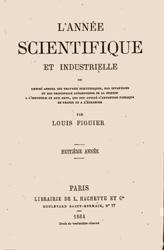
Professor Paul-Jean Coulier, of Val-de-Grâce in Paris, published his observations that (latent) fingerprints can be developed on paper by iodine fuming, explaining how to preserve (fix) such developed impressions and mentioning the potential for identifying suspects' fingerprints by use of a magnifying glass.
1877 - Taylor
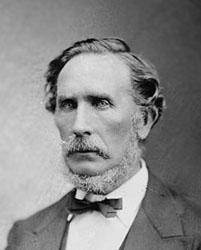
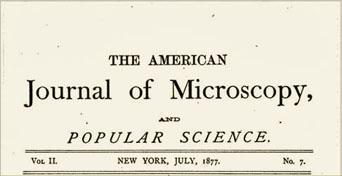
American microscopist Thomas Taylor proposed that finger and palm prints left on any object might be used to solve crimes. The July 1877 issue of The American Journal of Microscopy and Popular Science included the following description of a lecture by Taylor:
Hand Marks Under the Microscope. - In a recent lecture, Mr. Thomas Taylor, microscopist to the Department of Agriculture, Washington, D.C., exhibited on a screen & view of the markings on the palms of the hands and the tips of the fingers, and called attention to the possibility of identifying criminals, especially murderers, by comparing the marks of the hands left upon any object with impressions in wax taken from the hands of suspected persons. In the case of murderers, the marks of bloody hands would present a very favorable opportunity. This is a new system of palmistry.
1870s-1880 - Faulds
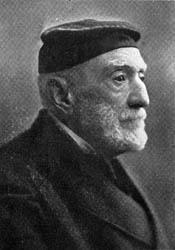
During the 1870s, Dr. Henry Faulds, the British Surgeon-Superintendent of Tsukiji Hospital in Tokyo, Japan, took up the study of "skin-furrows" after noticing finger marks on specimens of "prehistoric" pottery. A learned and industrious man, Faulds not only recognized the importance of fingerprints as a means of identification, but devised a method of classification as well. Dr. Faulds' clinic in Tokyo eventually became St. Luke's International Hospital.
In 1880, Faulds forwarded an explanation of his classification system and a sample of the forms he had designed for recording inked impressions, to Sir Charles Darwin. Darwin, in advanced age and ill health, informed Dr. Faulds he could be of no assistance to him, but promised to pass the materials on to his cousin, Francis Galton.
Also in 1880, Faulds published an article in the Scientific Journal "Nature" (nature). He discussed fingerprints as a means of personal identification, and the use of printer's ink as a method for recording such fingerprints. He is also credited with the first latent print identification - a greasy fingerprint deposited on an alcohol bottle.
1882 - Thompson
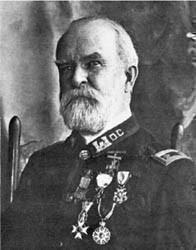
In 1882, Gilbert Thompson of the U.S. Geological Survey in New Mexico, used his own thumb print on a document to help prevent forgery. This is the first known use of fingerprints in the United States. Click the below image to see a larger image of an 1882 receipt issued by Gilbert Thompson to "Lying Bob" in the amount of 75 dollars.
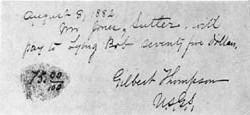
1882 - Bertillon
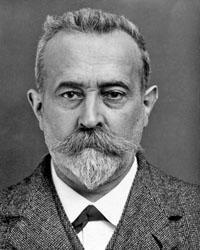
Alphonse Bertillon, a clerk in the Prefecture of Police of at Paris, France, devised a system of classification, known as anthropometry or the Bertillon System, using measurements of parts of the body. Bertillon's system included measurements such as head length, head width, length of the middle finger, length of the left foot; and length of the forearm from the elbow to the tip of the middle finger. Bertillon also established a system of photographing faces - which became known as mugshots.
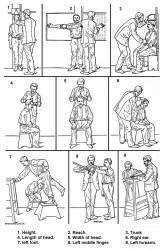
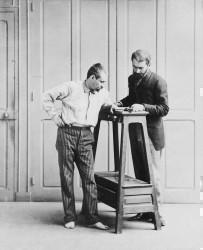
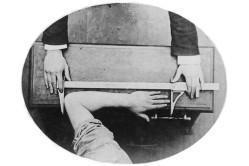
In 1888 Bertillon was made Chief of the newly created Department of Judicial Identity where he used anthropometry as the primary means of identification. He later introduced Fingerprints, but relegated them to a secondary role in the category of special marks.
1883 - Mark Twain (Samuel L. Clemens)
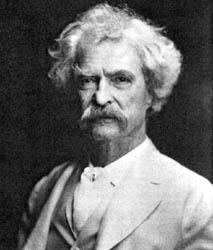
A murderer was identified using fingerprint identification in Mark Twain's book "Life on the Mississippi." A dramatic court trial, including fingerprint identification, was depicted in a later book, "The Tragedy of Pudd'n Head Wilson." This book was adapted into a movie in 1916, and a made-for-TV movie in 1984.
1888 - Galton
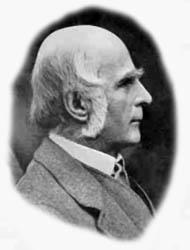
Sir Francis Galton, British anthropologist and a cousin of Charles Darwin, began his observations of fingerprints as a means of identification in the 1880's.
1891 - Vucetich
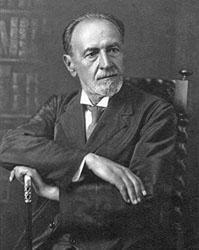
Juan Vucetich, an Argentine Police Official, began the first fingerprint files based on Galton pattern types. At first, Vucetich included the Bertillon System with the files.

Right Thumb Impression and Signature of Juan Vucetich
1892 - Alvarez
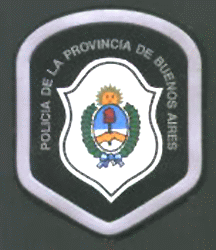
At Buenos Aires, Argentina in 1892, Inspector Eduardo Alvarez made the first criminal fingerprint identification. He was able to identify Francisca Rojas, a woman who murdered her two sons and cut her own throat in an attempt to place blame on another. Her bloody print was left on a door post, proving her presence at the scene of the murder. Alvarez was trained by Juan Vucetich.
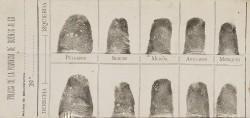
Francisca Rojas' Inked Fingerprints
1892 - Galton

Sir Francis Galton published his book, "Finger Prints" in 1892, establishing the individuality and permanence of fingerprints. The book included the first published classification system for fingerprints. In 1893, Galton published the book "Decipherment of Blurred Finger Prints," and in 1895 published the book "Fingerprint Directories."
Galton's interest in fingerprints included assistance for his research into Eugenics. Eugenics focused on manipulating heredity or breeding to produce better people and on eliminating those considered biologically inferior.
While Galton soon discovered fingerprints were of no help to his genetic research (fingerprints offered no firm clues to an individual's intelligence or genetic history), his research supported what Herschel and Faulds already believed:
(1) Except for injury or disease, fingerprint ridge arrangements do not change over the course of an individual's lifetime; and
(2) No two fingerprints are exactly the same.
According to Galton's calculations, the odds of two individual fingerprints being the same were 1 in 64 billion. He named the characteristics by which fingerprints can be identified. Most Galton Detail terms describing friction ridge skin and impression features have been abandoned in modern forensic science terminology.
1896 - Hodgson
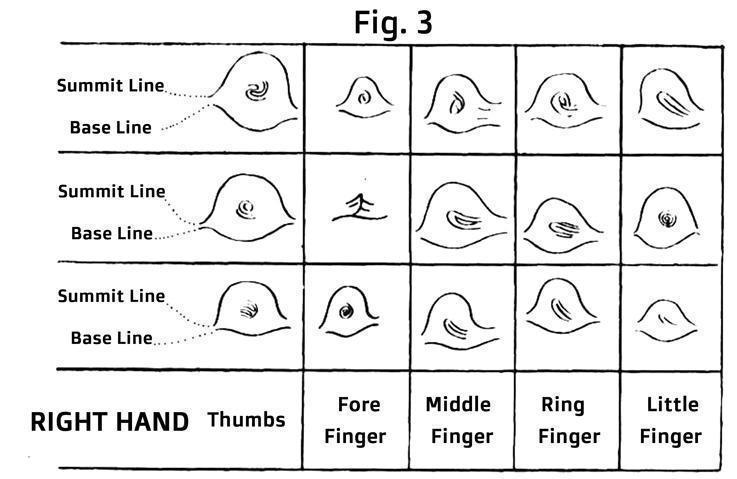
On 8 May 1896, Dr. Ralph Hodgson gave a lecture on the value of fingerprint identification at the Sydney School of Arts in Sydney, Australia. The lecture included discussion of the great value of fingerprints and also the limited adoption of fingerprint records for identification by worldwide agencies already using Bertillon measurements. A diagram used in the lecture is shown above.
1897 - The first National Bureau of Identification in the US and Canada

On October 20, 1897, the National Association of Chiefs of Police of the United States and Canada opened the National Bureau of Identification (NBI) in City Hall at Chicago, Illinois. NBI files included mugshots, fingerprints and related Bertillon records from criminals. In 1902, the parent organization's name was changed to the International Association of Chiefs of Police and the NBI moved from Chicago to Washington, DC.
1897 - India's Fingerprint Pioneers
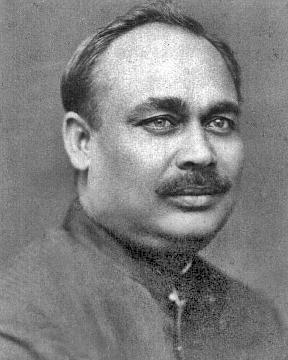
Qazi Azizul Haque
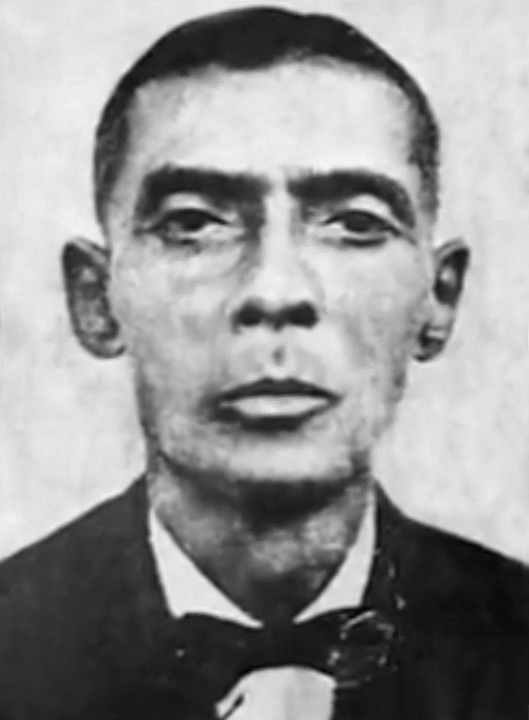
Hem Chandra Bose
On 12 June 1897, the Council of the Governor General of India approved a committee report that fingerprints should be used for the classification of criminal records. The Anthropometric Bureau in Kolkata (now Calcutta) became the world's first Fingerprint Bureau later that year. Qazi Azizul Haque and Hem Chandra Bose worked in the Calcutta Anthropometric Bureau (before it became the Fingerprint Bureau).
Haque and Bose are the two Indian fingerprint experts credited with primary development of the Henry System of fingerprint classification (named for their supervisor, Edward Richard Henry). The Henry classification system is still used in many countries (primarily as the manual filing system for accessing paper fingerprint card archive files which have not been scanned and computerized).
1900s
1900 - E.R. Henry

The United Kingdom Home Secretary Office conducted an inquiry into "Identification of Criminals by Measurement and Fingerprints." Mr. Edward Richard Henry (later Sir ER Henry) appeared before the inquiry committee to explain the system published in his recent book "The Classification and Use of Fingerprints." The committee recommended adoption of fingerprinting as a replacement for the relatively inaccurate Bertillon system of anthropometric measurement, which only partially relied on fingerprints for identification.
1901 - New Scotland Yard
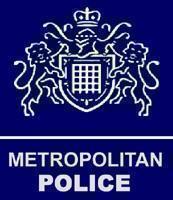
The Fingerprint Branch at New Scotland Yard (Metropolitan Police) was created in July 1901. It used the Henry System of Fingerprint Classification.
1902 - de Forest Starts America's First Civil Fingerprint Process
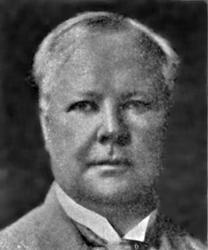
Dr. Henry Pelouze de Forest was appointed Chief Medical Examiner of the New York City Civil Service commission in June of 1902. He was tasked with developing a civil applicant identification process to reduce fraud involving imposters taking tests for applicants. Dr. de Forest travelled to Europe to study the Bertillon system, but while in England enroute to France, he read a September 15, 1902 Daily Telegraph newspaper with the headline "Identification by Finger Prints." Scotland Yard's success in solving cases with fingerprints convinced de Forest to abandon the Bertillon system, cancelling his plans to study that system in France.
Although rebuffed by Scotland Yard at first, with US Embassy assistance Dr. de Forest was accepted as a fingerprint student under Sergeant (later Chief Inspector) Charles S. Collins at Scotland Yard. Dr. de Forest returned to America with a fingerprint magnifier, several record forms, and a copy of Sir Edward R. Henry’s publication "The Classification and Uses of Finger Prints."
On 19 December 1902, James Johnson was the first person in America fingerprinted for civil applicant purposes. Johnson was fingerprinted as part of New York City's Civil Service application process.
1903
The New York State Prison System and Leavenworth Penitentiary in Kansas began using fingerprinting.
The fingerprints of Will and William West were compared at Leavenworth Penitentiary after both men were found to have very similar Anthropometric (Bertillon System) measurements.
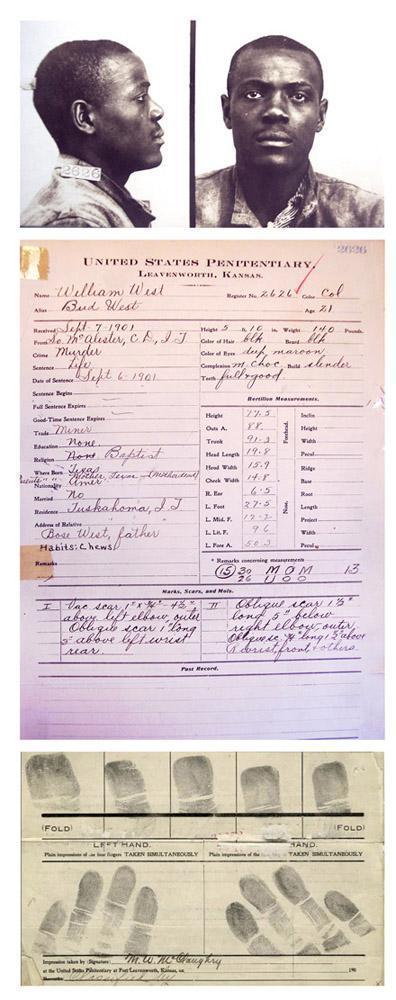
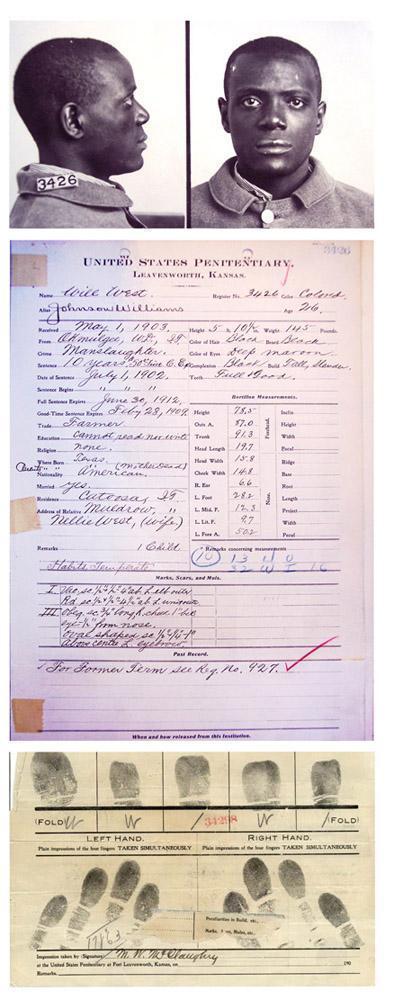
1904
The use of fingerprints began at the St. Louis Police Department. They were assisted by a Sergeant from Scotland Yard who had been on duty at the St. Louis World's Fair Exposition guarding the British Display. After the St. Louis World's Fair, more and more US police agencies joined in submitting fingerprints to the International Association of Chiefs of Police Bureau of Criminal Identification.
1905
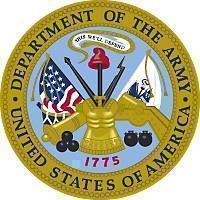
U.S. Army begins using fingerprints.
U.S. Department of Justice forms the Bureau of Criminal Identification in Washington, DC to provide a centralized reference collection of fingerprint cards.
1907
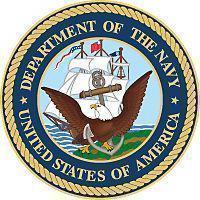
U.S. Navy begins using fingerprints.
In 1907, the U.S. Department of Justice's (DOJ) Bureau of Criminal Identification moves from Washington, DC to Leavenworth Federal Penitentiary in Kansas where it is staffed at least partially by inmates. Suspicious of inmates involvement with the identification process, the International Association of Chiefs of Police BCI (still located in Washington, DC), refused to share with the DOJ BCI in Kansas. The lack of communication between local, state, and federal law enforcement presented great challenges at all levels in locating and identifying wanted criminals, especially those moving from state to state. The disconnect was not remedied until 1924.
1908

U.S. Marine Corps begins using fingerprints.
1910 - Brayley
In 1910, Frederick Brayley published the first American textbook on fingerprints, "Arrangement of Finger Prints, Identification, and Their Uses."
1912 - Fingerprint identification came back to haunt Sir E.R. Henry on 27 November 2012 when he was shot outside his home in the Kensington district of west central London. Sir Henry was exiting a vehicle when Alfred Bowes (also known as Albert Bowes) shot at him three times. One shot hit Henry, lodging in his groin. Bowes was angry because his fingerprints proved he had previously been arrested for being drunk and disorderly - causing him to be denied a taxi driver's license. Bowes was sentenced to a prison term of up to 15 years. Sir Henry spoke out for a lenient sentence at Bowe's trial, and when he was released from prison in 1922, Henry paid for his passage to Canada for a new start on life.
1914 - Edmond Locard
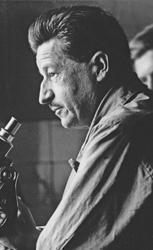
Dr. Edmond Locard published his fingerprint identification conclusions and the criteria that should be used to ensure reliability based on a statistical analysis study in 1914. His research revealed the following three-part rule, which can be summarized as follows:
1. If more than 12 concurring points are present and the fingerprint is sharp, the certainty of identity is beyond debate.
2. If 8 to 12 concurring points are involved, then the case is borderline and the certainty of identity will depend on:
2.a. the sharpness of the fingerprints;
2.b. the rarity of its type;
2.c. the presence of the center of the figure [core] and the triangle [delta] in the exploitable part of the print;
2.d. the presence of pores [poroscopy was previously spelled porescopy in some fingerprint publications];
2.e. the perfect and obvious identity regarding the width of the papillary ridges and valleys, the direction of the lines, and the angular value of the bifurcations [ridgeology / edgeoscopy]. Dr. Locard also realized the value and the importance of, and rendered qualified conclusions to the identification process.
3.If a limited number of characteristic points are present, the fingerprints cannot provide certainty for an identification, but only a presumption proportional to the number of points available and their clarity.
(Modified from: Christophe Champod, Institut de Police Scientifique et de Criminiologie BCH/Universite de Lausanne, " Edmond Locard - Numerical Standards & "Probable" Identifications, Journal of Forensic Identification, 45 (2) 1995, pp136-155)
1914
The idea of INTERPOL was born in Monaco at the first International Criminal Police Congress (14 to 18 April 1914). Officials from 24 countries discussed cooperation on solving crimes. In addition to laying the foundation for INTERPOL, the meeting proposed laying the foundations for establishing:
(1) An international identification file;
(2) A classification system for such files; and
(3) A list of categories for ordinary-law "international" or "cosmopolitan" offenders.
Electronic Encoding of Fingerprints - Denmark Police
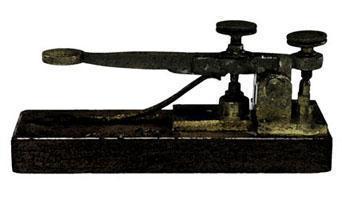
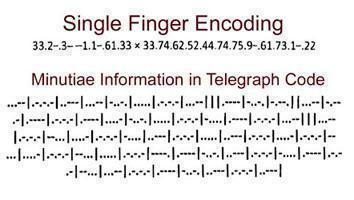
In 1914, Hakon Jrgensen with the Copenhagen, Denmark Police lectured about the distant (remote) identification of fingerprints at the International Police Conference in Monaco. The process involved encoding fingerprint features for transmission to distant offices facilitating identification through electronic communications. In 1916, the book "Distant Identification" is published and used in Danish police training. The NIST (NBS) 1969 technical note reviewing Jrgensen's system is online here. The 1922 English version of a book describing Jrgensen's "Distant Identification" system is online here.
1915
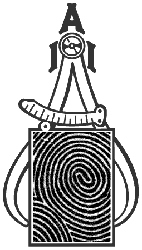
Inspector Harry H. Caldwell of the Oakland, California Police Department's Bureau of Identification wrote numerous letters to "Criminal Identification Operators" in August 1915, requesting them to meet in Oakland for the purpose of forming an organization to further the aims of the identification profession. In October 1915, a group of twenty-two identification personnel met and initiated the "International Association for Criminal Identification" In 1918, the organization was renamed to the International Association for Identification (IAI) due to the volume of non-criminal identification work performed by members. Sir Francis Galton's right index finger appears in the IAI logo. The IAI's official publication is the Journal of Forensic Identification. The IAI's 100th annual educational conference was held in Sacramento, California, near the IAI's original roots.
1923 - US Department of Justice Fingerprint Repository Returns to Washington, DC
Following a meeting between the US Attorney General and representatives of the International Association of Chiefs of Police (IACP), the US Department of Justice Bureau of Criminal Identification fingerprint collection was transferred from Leavenworth Penitentiary back to Washington, DC, in October 1923.
1924 - FBI's Identification Division is formed
In 1924, an act of congress established the Identification Division of the FBI. The International Association of Chiefs of Police (IACP) Bureau of Criminal Identification fingerprint repository and the US Justice Department's Bureau of Criminal Identification (BCI) fingerprint repository were combined with fingerprint cards from Leavenworth Federal Penitentiary to form the nucleus of the FBI Identification Division fingerprint files with a starting total of 810,188 fingerprint cards. In 1924, the FBI's Identification Division had less than 1,000 routine contributors and received an average of 300 fingerprint cards daily (FBI Law Enforcement Bulletin, February 1933).
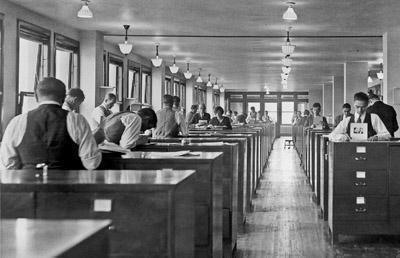
Fingerprint Clerks in the Technical Section of the FBI's Identification Division in 1930. The job title Fingerprint Clerk was later changed to Fingerprint Examiner.
1933 - Between 1924 and early 1933, the number of law enforcement agencies routinely submitting fingerprint records to the FBI had increased more than five-fold to 5,282 routine contributors... and the average number of daily fingerprint cards received increased more than six-fold to 2,000 cards daily (FBI Law Enforcement Bulletin, February 1933).
1938 - The FBI's Identification Division files included more than 9,500,000 fingerprint cards as of the end of 1938 (FBI Law Enforcement Bulletin, December 1938, p. 18).
1940s
By the end of World War II, most American fingerprint experts agreed there was no scientific basis for a minimum number of corresponding minutiae to determine an "identification" and the twelve-point rule was dropped from the FBI publication, "The Science of Fingerprints."
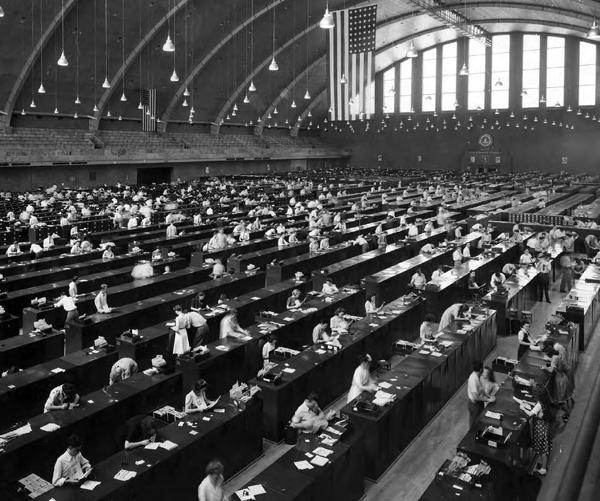
FBI Identification Division experts
in the Washington DC Armory.
By 1946, the FBI had processed over 100 million fingerprint cards in files maintained manually. In 1947, the FBI's fingerprint repository was moved from the Washington DC Armory Building to a new building at 2nd and D Streets Southwest in Washington, DC.
With the introduction of automated fingerprint identification system (AFIS) technology, the files were later split into computerized criminal files and manually maintained civil files. Many of the manual files were duplicates though, the records actually represented somewhere in the neighborhood of 25 to 30 million criminals, and an unknown number (tens of millions) of individuals represented in the civil files.
1960s
In 1963, the FBI's Latent Print Unit completed 9,668 latent print cases from local, state and federal American law enforcement, including 76,309 specimens (evidence items) for latent print examination. The Latent Print Unit identified suspects in 795 of the cases.
As of 1 May 1964, the FBI's Identification Division had more than 170 million fingerprint records (170,681,473 records), including almost 45 million criminal fingerprint records (44,926,750 criminal fingerprint records).
1970s
1971
On 15 December 1971, the FBI began accepting only arrest fingerprint cards with light red (pink) impression boundary lines conforming to FD-249 specifications. Before that date, many US law enforcement agencies used their own 8-inch x 8-inch fingerprint cards with slight variations of the height and width of blocks wherein fingerprints would be recorded. The change was needed for two reasons:
● To standardize the location of fingerprints for automated fingerprint scanning (flying spot laser scanning in the early years); and
● To eliminate artificial bifurcations (artifacts) created when inked fingerprints extended over black ink finger block boundary lines. The light red ink eliminated such artifact problems.

Click on the above image to see the front of the new "pinkish" FBI criminal record fingerprint cards used since 1971.
The thousands of Tenprint Examiners working in the FBI's Identification Division in the 1970s had to pull groups of fingerprints cards from file cabinets (sometimes only a few cards and sometimes hundreds) to manually compare the one-by-one against a newly received arrest, applicant, or other type of inked fingerprint card.
Here are front and back images of a placeholder card which was used by one of those Tenprint Examiners in 1972. Frequently, examiners would find that a group of fingerprint cards they needed to search would have another examiner's placeholder card inserted among them. That large plastic placeholder card was the signal to let them know they would have to wait for the missing (currently being hand-searched nearby) cards to be returned to the file drawer before the new search (one-by-one comparisons) could be completed.
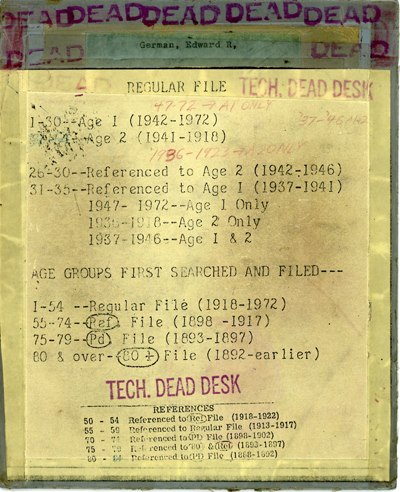
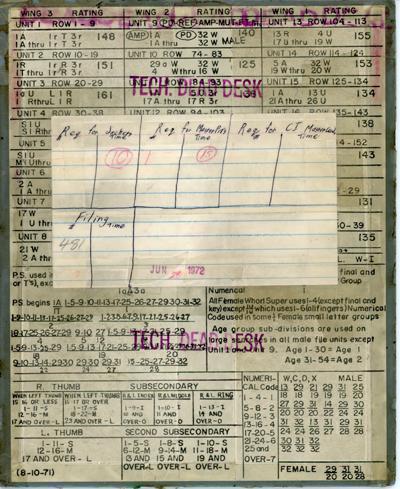
The above placeholder card is stamped with the word "DEAD" to indicate the Fingerprint Examiner worked for the Dead Desk unit of the Technical Section (TECH. DEAD DESK). The Dead Desk examiners were assigned the task of daily searching unknown deceased fingerprints from unidentified persons (from bodies discovered without ID documents, and fingerprints from unidentified deceased US soldiers in the Viet Nam war).
The imperfect (often very deterioratied) condition of the skin on the deceased person's fingers meant that DEAD DESK fingerprint records were especially difficult to analyze/classify, and compare. Additionally, DEAD DESK fingerprints had to be compared against both criminal and civil files, with the civil files having much less specific classification segments, often requiring tens times as many comparisons in the civil files versus the same fingerprint classification range in the criminal files.
1973
The International Association for Identification Standardization Committee authored a resolution stating that each identification is unique and no valid basis exists to require a minimum number of matching points in two friction ridge impressions to establish a positive identification. The resolution was approved by members at the 1973 annual IAI conference.
1974 - The Fingerprint Society

In 1974, four employees of the Hertfordshire (United Kingdom) Fingerprint Bureau contacted fingerprint experts throughout the UK and began organization of that country's first professional fingerprint organization, the National Society of Fingerprint Officers. The organization initially consisted of only UK experts, but quickly expanded to international scope and was renamed The Fingerprint Society in 1977. The initials FFS behind a fingerprint expert's name indicates they were recognized as a Fellow of the Fingerprint Society. The Society hosted annual educational conferences with speakers and delegates attending from many countries. In 2017, The Fingerprint Society merged with The Chartered Society of Forensic Sciences (CSFS) and has since been known as the CSFS Fingerprint Division.
1977

On 1 August 1977 at New Orleans, Louisiana, members attending the 62nd Annual Conference of the International Association for Identification (IAI) voted to establish the world's first certification program for fingerprint experts. Since then, the IAI's Latent Print Certification Board has tested thousands of applicants, and periodically proficiency retests all IAI Certified Latent Print Examiners (CLPEs).
Contrary to assertions by some forensic science critics that fingerprint experts claim they never make erroneous identifications, the Latent Print Certification program, active since 1977, has specifically recognized such mistakes sometimes occur and must be addressed.
During the past four decades, CLPE status has become a prerequisite for journeyman fingerprint expert positions in some US state and federal government forensic laboratories. IAI CLPE status is considered by many identification professionals to be a measurement of excellence. CLPE's have sometimes made erroneous latent print identifications (including an erroneous identification made by the chair of the IAI's Latent Print Certification Board).
1995
At the International Symposium on Latent Fingerprint Detection and Identification, conducted by the Israeli National Police Agency, at Neurim, Israel, June, 1995, the Neurim Declaration was issued. The declaration, (authored by Pierre Margot and Ed German), states "No scientific basis exists for requiring that a pre-determined minimum number of friction ridge features must be present in two impressions in order to establish a positive identification." The declaration was unanimously approved by all present, and later, signed by 28 persons from the following 11 countries: Australia, Canada, France, Holland, Hungary, Israel, New Zealand, Sweden, Switzerland, United Kingdom, and United States.
In 1995, the FBI established the Technical Working Group for Friction Ridge Analysis, Study, and Technology (TWGFAST) to help establish national standards, guidelines, and best practices for friction ridge examination in forensic science laboratories and law enforcement latent print offices. TWGFAST was modeled after the FBI-sponsored Technical Working Group on DNA Analysis Methods (TWGDAM) established in 1989.
In 1999, TWGFAST became SWGFAST when all the FBI-sponsored Technical Working Groups (TWGs) were renamed to Scientific Working Groups (SWGs). The renaming was partially to differentiate the long-term (many years) aspect of forensic working groups establishing standards, guidelines, and best practices from the short-term (one-day or one-week) TWGs sponsored by the US National Institute of Justice to work on documents/guides... and partially to emphasize the focus on embracing science for improvement in the various forensic disciplines. SWGFAST documents are still online on the NIST OSAC Friction Ridge Subcommittee here.
2000s
2004
Because of quality assurance lessons learned after high-profile case errors such as the Brandon Mayfield mistaken identification, check boxes for latent print examination since 2004 have included the following:
- Training to competency of all latent print examiners in compliance with national or international guidelines.
- Annual Proficiency Testing of every latent print examiner in compliance with national or international guidelines.
- International Association for Identification Certified Latent Print Examiner status. Just as most accountants are not Certified Public Accountants, less than half of all latent print examiners in America ever achieve IAI Certification. It does not mean they are not trained to minimum competency but does mean they have not passed what many US state and federal labs consider the minimum status for employment as senior latent print examiners.
- Every latent print "identification" (strongest association) must undergo quality assurance review by a second trained to competency latent print examiner.
- Every case including one of the following "red flags" must undergo blind-review by a second latent print examiner (preferably by a CLPE). During the past four decades, one or both of these red flags have almost always been present when a mistaken "identification" happens:
- Only one latent print strongest association ("identification") to a person, especially if the association resulted from automated search results (AFIS or ABIS).
- Any complex (poor quality) latent or record print involved in a strongest association ("identification") opinion. The following sufficiency graph (SWGFAST version 2013) does not suggest or endorse the use of minutiae counts as the sole criteria for a decision threshold, but the yellow (B) area is typically complex and the red (A) area is typically insufficient for "identification":

No forensic service provider (FSP) can do everything in every case. They must all balance accuracy, timeliness, and thoroughness against available resources... and thoroughness is typically what gets sacrificed. The variety of latent print casework quality assurance policies used by some FSPs, include the following:
- Requiring a second expert blind-review of any case involving only one latent print suitable for comparison, whether or not an elimination or strongest association (identification) occurred. This practice helps eliminate confirmation bias when other experts might expect only "identifications" to be presented to them for review.
- Requiring a second latent print examiner review (typically not a blind-review) of every latent print comparison in every case, including all eliminations (non-idents).
2012

INTERPOL's Automated Fingerprint Identification System repository exceeds 150,000 sets of fingerprints for important international criminal records from 190 member countries. Over 170 countries have 24 x 7 interface ability with INTERPOL expert fingerprint services.
2014
In 2014, SWGFAST was replaced by the Friction Ridge Subcommittee of the Organization of Scientific Area Committees for Forensic Science (OSAC). Most, but not all, SWGs were disbanded when OSAC was formed.
2015
The International Association for Identification celebrated it's 100th Anniversary in California, the same state where the IAI began in 1915.
2021 - Largest Annual International Identification Conference
105th IAI Annual Educational Conference
Sunday, August 1st, 2021 - Saturday, August 7th, 2021
The IAI Annual Educational Conference is the largest organized event in the world and provides a week of high-quality, cutting-edge education and hands-on training in forensic physical evidence examination and crime scene processing.
2021- Fingerprint Records versus DNA Records
On 21 April 2021, the FBI's Combined DNA Index System (CODIS) met a major milestone of 20 million total DNA records received in its combined national DNA repository.
2024
America's Largest Databases
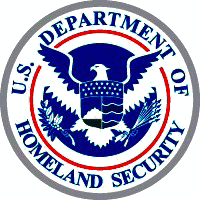
The Department of Homeland Security (DHS) Office of Biometric Identity Management (OBIM was formerly US-VISIT), contains over 120 million persons' fingerprints, many in the form of two-finger records. The US Visit Program has been migrating from two flat (not rolled) fingerprints to ten flat fingerprints since 2007. "Fast capture" technology currently enables the recording of ten simultaneous fingerprint impressions in as little as 15 seconds per person.
The DHS Automated Biometric Identification System or IDENT, is operated and maintained by OBIM. As of May 2023, IDENT currently holds approximately 300 million unique identities and processes more than 400,000 biometric transactions per day (https://www.dhs.gov/biometrics).
As of December 2023, the FBI's Next Generation Identification (NGI) processes an average of more than 193,000 tenprint record daily searches against more than 158 million computerized fingerprint records (both criminal and civil applicant records). The 193,000 daily fingerprint searches support 24,000 federal, state, local, and international partners submitting criminal and/or civil electronic submissions to NGI throughout the month. At 70% more accurate than the FBI's previous version of automated latent print technology (Integrated Automated Fingerprint Identification System or IAFIS), NGI is one of the FBI's most valuable services to American law enforcement, providing accurate and rapid fingerprint identification support.
FBI civil fingerprint files in NGI (primarily including federal employees and federal employment applicants) have become searchable by all US law enforcement agencies in recent years. Many enlisted military service member fingerprint cards received after 1990, and most (officer, enlisted and civilian) military-related fingerprint cards received after 19 May 2000, have been computerized and are searchable.
As of December 2023, NGI's civil fingerprint repository has over 73,534,961 searchable fingerprint records and over 84,532,710 criminal fingerprint repository records (https://le.fbi.gov/file-repository/ngi-fact-sheet.pdf/view).
The FBI continues to expand their automated identification activities to include other biometrics such as palm, face, and iris. Direct face search capabilities in NGI are a reality for some US law enforcement agencies, and all others can submit faces to FBI CJIS' Face Services Unit by opening collaborative investigations through their supporting FBI offices.
Every state in America, as well as many large cities, have their own AFIS databases, each with a subset of fingerprint (and often palmprint) records which are not stored in any other database. Law enforcement fingerprint interface activities are important to facilitate searches to solve crime, i.e., state and federal crime laboratories should search unidentified latent prints in smaller agency AFIS databases associated with the location where a crime happened.
International Sharing
Many European nations currently leverage multiple fingerprint information sharing operations, including the following: Schengen Information System (SIS); Visa Information System (VIS); European Dactyloscopy (EURODAC); and Europol. Additionally, a biometric-based Entry Exit System (EES) is in planning stages. Many other countries exchanges searches/fingerprint records in a manner similar to Europe, with automated and non-automated interfaces existing in accordance with national/international privacy laws and the urgency/importance of such searches.
As of 2022, INTERPOL's Automated Fingerprint Identification System repository exceeds 220,000 sets of record fingerprints for important international criminal records and more than 17,000 crime scene marks (latent prints).
World's Largest Database

The Unique Identification Authority of India is the world's largest fingerprint (and largest multi-modal biometric) system using fingerprint, face and iris biometric records. India's Unique Identification project is also known as Aadhaar, a word meaning "the foundation" in several Indian languages. Aadhaar is a voluntary program with the goal of providing most of India's projected 1.4 billion residents (projected to be 1.429 billion by the end of 2023) with reliable national identification documents.
With a biometric database many times larger than any other in the world, Aadhaar's ability to leverage automated fingerprint and iris modalities (and potentially automated face recognition) enables rapid and reliable automated searching and identification impossible to accomplish with fingerprint technology alone, especially when searching children and elderly residents' fingerprints (children are fingerprinted and photographed as young as age 5).
As of January 2024, theUnique Identification Authority of India has issued more than 1.38 billion (more than 138 crore) Aadhaar numbers.
___________________________________
Like most attempts to document history, this page strives to balance what happened first with what matters. The result does not mean this fingerprint history page (or any other historical account) is complete or entirely accurate. This page is maintained by an American fingerprint expert, biased by English language scientific journals and historical publications. The author of this page tries to remember that everything he has seen or experienced is his perspective... not necessarily fact or truth.
Other countries' experts (especially from non-English language countries) have completed important fingerprint-related scientific accomplishments before and after the listed events. Please email recommended changes and citations for those modifications to ed "at" onin.com.
___________________________________
Science is a set of provisional explanations, also known as hypotheses, which are updated as new information becomes available.
Over a period of decades, scientific understanding in every discipline increases. Newly realized "truths" then enable replacement of erroneous portions of standards, guidelines, and best practices consecrated by the previous generation of well-intentioned experts.
For example, the 12-point rule utilized for "identifying" fingerprints in America during the early 1900s was abandoned by the FBI in the 1940s when it was realized 12 poor-quality (low clarity) points were less rare (had lower specificity) for "identification" support than fewer very clear points having relatively rare shapes and unit relationships.
Nowadays, friction ridge science is improving by attempting to express subjective opinions with greater clarity (not as positive identifications) until new research supports the next advancement... perhaps that advancement will be a well-validated algorithm stating likelihood ratios.
___________________________________
References:
FBI, The CJIS Link; vol. 4, no. 23, page 10, by US Department of Justice, Federal Bureau of Investigation, Criminal Justice Information Services Division, Fall 2000.
Jenkins, J. J. (1902). National Bureau of Criminal Identification (No. 429). U.S. House of Representatives, Committee on the Judiciary.
Moore, Greg; Some of the above wording is credited to Greg Moore, from his previous fingerprint history page at www.brawleyonline.com/consult/history.htm (no longer online).
Von Minden, David L.; provided input for this page involving typos his students kept cutting and pasting into their homework.
Interpol, "General Position on Fingerprint Evidence," by the Interpol European Expert Group on Fingerprint Identification (accessed March 2010 at www.interpol.int).
Coulier, P.-J. Les vapeurs d'iode employees comme moyen de reconnaitre l'alteration des ecritures. In L'Annee scientiJique et industrielle; Figuier, L. Ed.; Hachette, 1863; 8, pp. 157-160 at http://gallica.bnf.fr/ark:/12148/bpt6k7326j (as of March 2010).
Henry Pelouze de Forest details are from an article by Harry J. Myer, II; Finger Print and Identification Magazine; 30(2), August, 1948.
Margot, Pierre and Quinche, Nicolas, "Coulier, Paul-Jean (1824-1890): A Precursor in the History of Fingermark Detection and Their Potential Use for Identifying Their Source (1863)", Journal of forensic identification, 60 (2), March-April 2010, pp. 129-134, (published by the International Association for Identification).
Herschel information is from a Fingerprint Identification presentation by T. Dickerson Cook at the annual meeting of the Texas Division, International Association for Identification, at Midland, Texas on 9 August 1954 (documented in Identification News, April 1964, pp. 5-10).
August 2018 presentation by FBI Biometric Services/NGI Section Chief William G. McKinsey at the International Association for Identification's annual educational conference.
William and Will West images courtesy of Joshua L. Connelly, CLPE, whose research into fingerprint history archives continues to enlighten the friction ridge community.
Identification. (1896, May 16). Australian Town and Country Journal (Sydney, NSW : 1870 - 1907), p. 28. Retrieved April 2, 2020, from http://nla.gov.au/nla.news-article71245769
Fingerprint versus DNA record numbers: In April 2021, the national Combined DNA Index System (CODIS) database finally reached the milestone of having 20 million persons' DNA records on file. However in April 2021, the US Government had over 420 million persons' record fingerprints on file in FBI and DHS databases, i.e., 21 fingerprint records on file for every 1 DNA record. https://www.fbi.gov/news/pressrel/press-releases/the-fbis-combined-dna-index-system-codis-hits-major-milestone
https://www.fbi.gov/file-repository/ngi-monthly-fact-sheet/march-2021-ngi-system-fact-sheet.pdf
https://www.gao.gov/assets/gao-21-386.pdf
Details about the 1912 attack on Sir E.R. Henry are from a NY Times article, 28 Nov 1912, page 4; and from the Baltimore Police Museum online page accessed 21 Sep 2023 at https://baltimorepolicemuseum.com/en/component/content/article/121-fingerprint-identification?catid=28&Itemid=101l